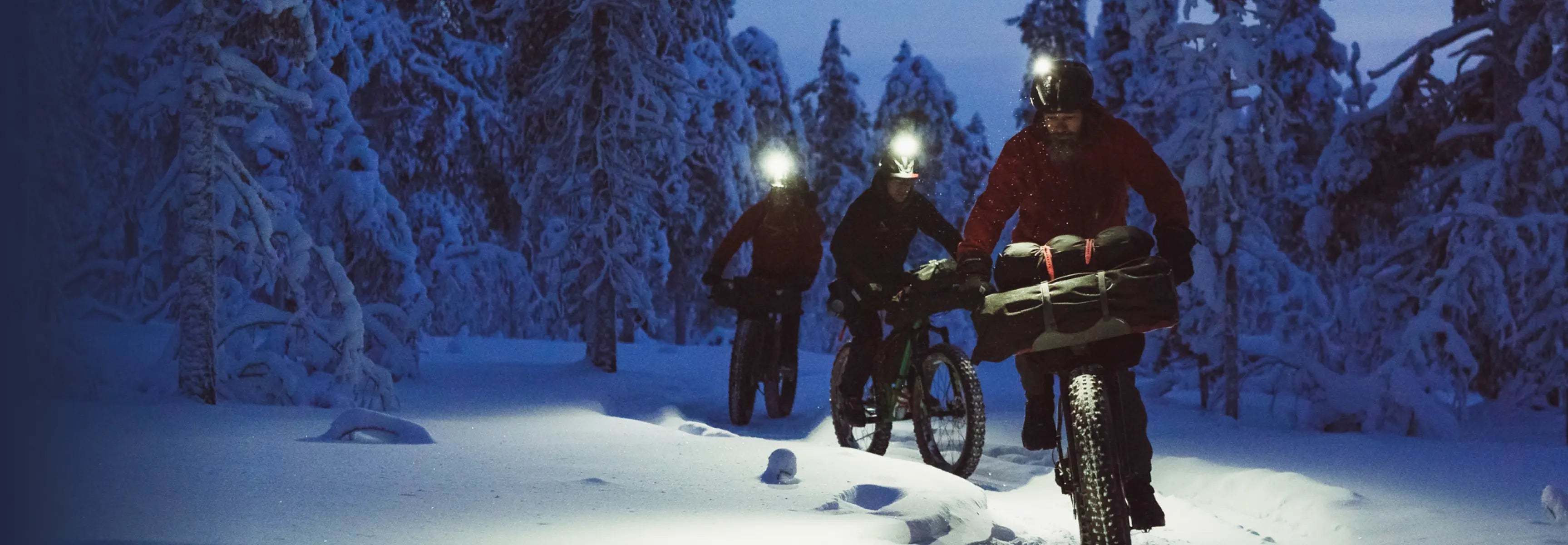
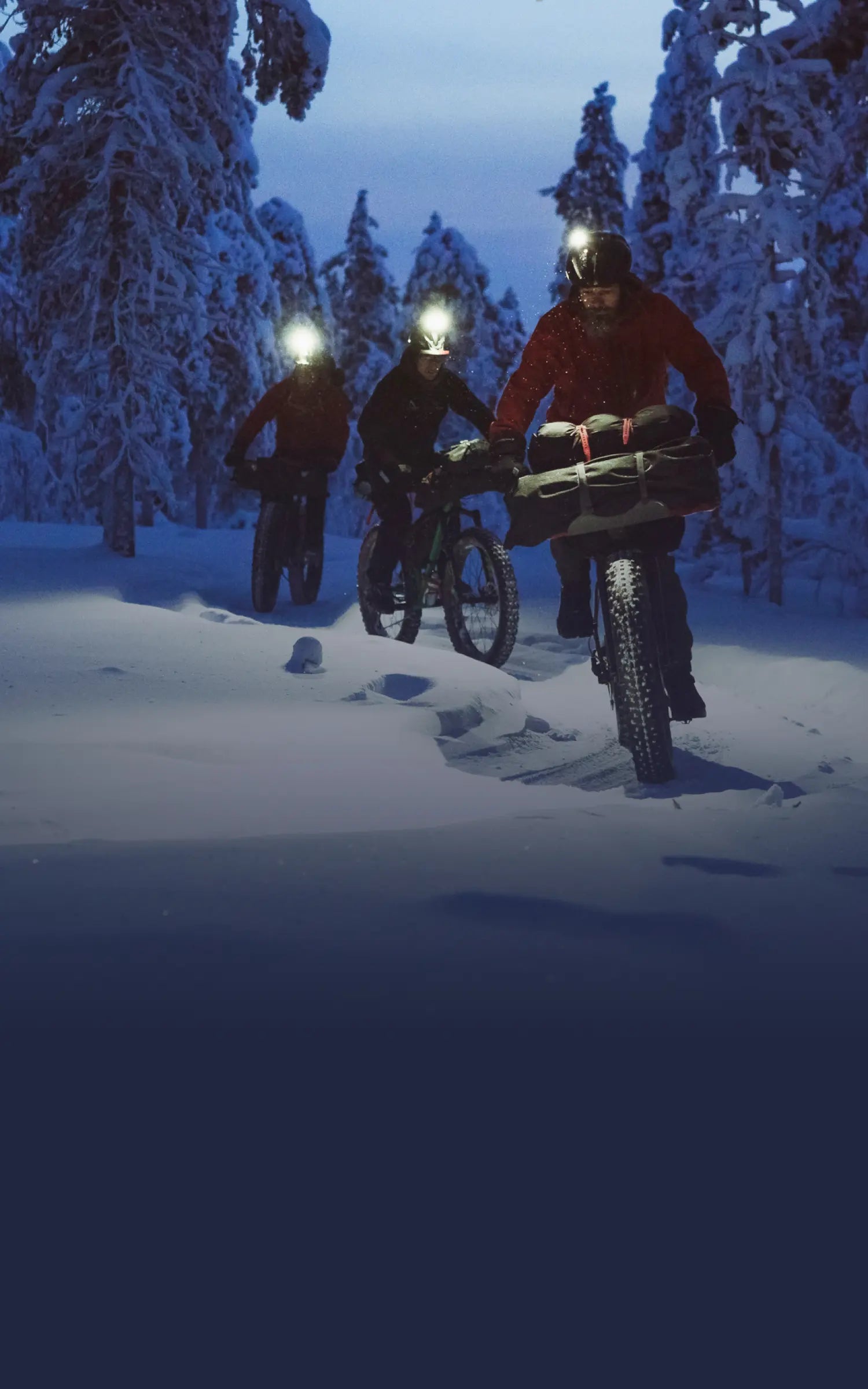
Suunto Blog
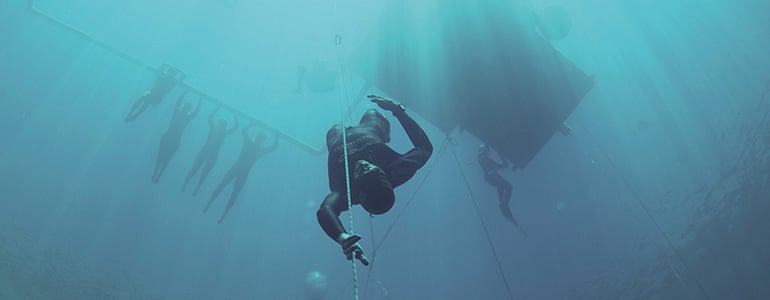
What freedivers can learn from the top of the world
Suunto ambassador and freediver William Trubridge has given his life to the sport of diving as deep into the ocean’s depths as any human can without scuba equipment. But he recently decided to explore the other end of the planet – the heights of the Himayalas. He trekked 300 km, with 10,000 m of vertical ascent. The longest day was 13 hours of hiking. We asked him what he learned at the top of the world.
Why did you go trekking in Nepal? It was mainly to do something together with my father David and brother Sam, as we live in separate parts of the world. We chose the Himalayas, as my father loves the mountains, and neither Sam nor myself have seen those kinds of mountains.
"I think freediving training definitely has a crossover effect to mountain climbing."
Where were you?We trekked to Kanchenjunga base camp in eastern Nepal. Kanchenjunga is the third highest mountain in the world, and one of the holiest. The remoteness of this area means there are few trekkers and even fewer amenities. This is exactly what we wanted.
At 5163 m, the atmosphere is half as dense as at sea level, meaning half the volume of oxygen per breath.Vastly different environment than you’re used to – how was it? It was humbling. I realised just how un-adapted my body is to that kind of world. After 12 years of only freediving training in the water my knees were unacquainted with any kind of impact, and the first day's gruelling descent paid its toll. In fact, all the descents were tough for me. I really enjoyed going uphill because I was able to push myself. You’re used to having a lack of oxygen – how was the higher altitude for you? The altitude wasn't a factor. Our ascent was very gradual, which allowed the body time to adapt. I think freediving training definitely has a crossover effect to mountain climbing by developing haemoglobin oxygen storage in the blood. Freediving training stimulates erythropoiesis, which is the generation of new red blood cells, in order to store and transfer more oxygen. This benefits all hypoxic activities, whether apnea or trekking at altitude. What did you learn? It gave me an appreciation of volumes, and the vastness of the mountains, but also the seas. When looking up at a towering 7,000 m peak and thinking that huge mass could disappear in the huge well that is our planet's oceans it made me marvel at the scale of these environments. What can freedivers learn from trekking or the mountains? Trekking can be a kind of meditation, as the slow pace of changing scenery lulls your mind. It also gives you an appreciation for the 'other end of the spectrum' of our planet's ecosystem, and for the many other various forms that water can take: snow, rain, mist, waterfalls and rivers.
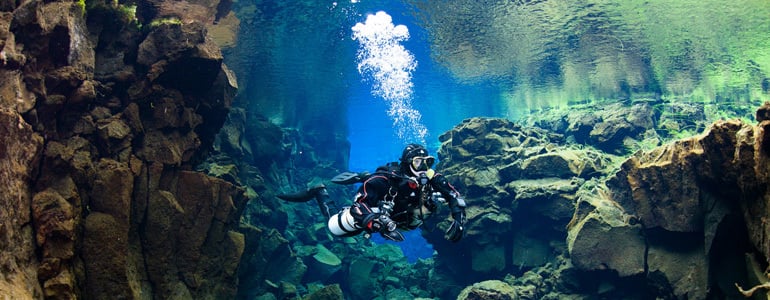
Diving the Shipwrecks of Bell Island
Suunto ambassador and underwater explorer Jill Heinerth dives the world's most incredible locations. Bell Island, Newfoundland is one such site. The video below shows why it's a diver's paradise.
Tell us about the Bell Island and its wrecks.
Bell Island is one of the few locations in North America that was under attack by German forces during the Second World War. In 1942, U-boats raided the island twice, sinking four iron ore carriers and destroying a loading wharf, killing more than 60 men. During the war, the mines on Bell Island, Newfoundland supplied iron ore that accounted for one-third of Canada's steel production. Germany knew that they could interrupt the flow of ore, even temporarily, and Canada's war output could be seriously affected.
Click here to find out more about Jill Heinerth
What drew you to dive there?
I was part of a team documenting the recovery of a sextant from the wreck of the Rose Castle. Rick Stanley, owner of Ocean Quest Adventure Resort, worked for over a year to secure the correct permits and line up provincial conservators to preserve the important artifact that will be eventually be displayed in an extensive museum on Bell Island.
Why is it such an amazing dive location?
Newfoundland is a great destination for the adventurous divers. Today, divers visiting Newfoundland’s rich waters, can dive these remarkable wrecks that have transformed into stunning and colorful reef structures.
Is there more to explore there?
In the summer, divers can also enjoy diving on icebergs and swimming with whales that gather in the area to feed on capelin. I’ve been recently working with other cave divers to document the submerged mines which cover over 100 square kms. This coming season, mine operators hope to open diving activities to qualified cave divers visiting the area. The mine is still filled with all the equipment and artifacts of operations there. Seeing the large equipment, miner’s graffiti and personal items is an interesting opportunity.
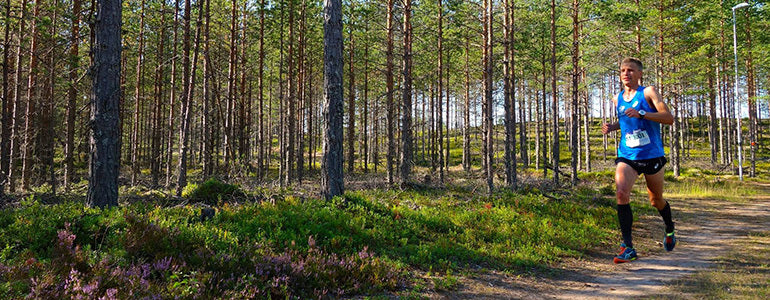
Is this the run of the summer?
Earlier this year, Jonas Buud, an amateur runner from Sweden, was laid up with a stress fracture in his hip bone. Things weren’t looking good; his recovery meant walking instead of running. But he had his eyes on his local race and decided to do it anyway, despite only two months’ of running on his legs. It was the 90 km Ultravasan, which follows the route of the famous Vasaloppet cross-country ski race. Not only did he win, he did it with some style, averaging a pace of 3’49 per kilometer for 90 km on an off-road course that packed an ascent of 872 m. We had one question:
That’s a 2h 40m marathon time. How did you sustain for 90km!?It’s crazy! I didn’t know my shape as I had not run much. The plan was just to follow others at the start. Max King, the 2014 100 k world champion was also running. The plan was just to follow him for as long as I could.
Talk us through the raceI thought I was running a bit slow in the beginning and I wasn’t checking my speed, but I did the first 5 km in 20 min, which was not so slow – and it was uphill!
“I couldn’t slow down. My legs just continued running.”
When did you realise you were doing well?The first 30 km is not so technical. It’s fast. It’s then a bit hilly at the halfway mark of Evertsberg, the sprint prize is also there, so Max took that one – he was running really fast. He then stopped to fill up some water but I continued through the checkpoint. There’s then a really long descent, the fastest part. I left Max and just continued at the same speed.
And you kept up the same pace? At 25 km to go, I thought, ‘Oh maybe I’m going too fast; I should slow down – I don’t want to run faster than a 4 minute km’, but I couldn’t slow down! It was a really nice run the whole way and I was in the shape of my life. My legs just continued running.
What a turnaround for you! It’s been a strange season. I got a stress fracture in December and could not run for six months. My first run was 1 min walk, 1 min run which I increased every week. My first 30 min run without stops was in late May.
You came late to running as well? Yes, I started really late although I've been orienteering since I was 10. I did my first marathon aged 30 in New York [2:36] where I met some other runners who told me to go on a training camp with them in Portugal. There I heard about the Swiss Alpine Marathon. I thought it would be too tough but I won. [He’s since won it eight times in a row!]
The finish must have been special?The year before was one of my best races ever [6:02 h]. Under six hours can be really tough. I had 5k left and I started to see what time I should have. I thought it can’t be true it’s too fast. It was one of the best moments as a runner because the history of the season, it’s also my hometown and a lot of people were at the finish.
What’s your training secret? I just run!

PREPARE FOR SNOW
When the snow falls, you want to be ready. And fit! Nothing will kill the fun quicker than an early season injury, so we asked pro skier Greg Hill for his best advice. “It’s definitely time to start getting ready,” he says. Below, he outlines the exercises you need to be doing to be in good shape for the snow.
STOP TALKING
Obviously keeping up on our cardio is very important, biking, running, treadmill whatever we have time for. But it’s important to do at least three sessions of 20 minutes each week. This is to just keep our cardio at par, but to improve it we need to push ourselves a little harder. That means three longer runs or bike rides of an hour but then 10% of that should be in the pushing hard phase – pushing so hard you can't speak! Put another way: 90% of our exercise should be in the ‘able to talk’ phase and then 10% in the ‘unable to talk’ phase.
GET DOWN!
Run or walk downhill. Hiking down from alpine hikes, or running downhill is a great way to shock your muscles and get them ready for the endless downhill descents. This imitates the impact of hard turns and the repetition of the sport.
HOLD THE WALL
Too busy? Go for a ‘wall sit’ and start extending the times you can sit against a wall. Get your legs at 90º, with your back against the wall and hold it there. This replicates the constant quad stress and strength you will need to crush the big runs. It’s an isometric strength training. Nothing moves or flexes – it just holds. Try two minutes and build up. (NOTE: Greg has quads of steel. We tried this and failed so don’t feel bad starting at 1 minute and pushing from there.)
JUMP!
It’s the classic ski training exercise but that’s because it works on developing power. There are many different games to play but the main thing is exploding up as high as possible and then landing and absorbing the shock smoothly. Reps of 20 and three or four sets to start off.
WEIGHTS
All around strength is also a big factor – core strength being key to balance and good skiing. So if you can, an all around weight routine will help immensely.
STAY UP LATE WATCHING YOUTUBE
Lastly, get excited for the ski season! Watch ski videos, dream up adventures, fuel your desire as much as possible. It’s the mind that will drive your body so get it excited!
Images by Bruno Long Photography
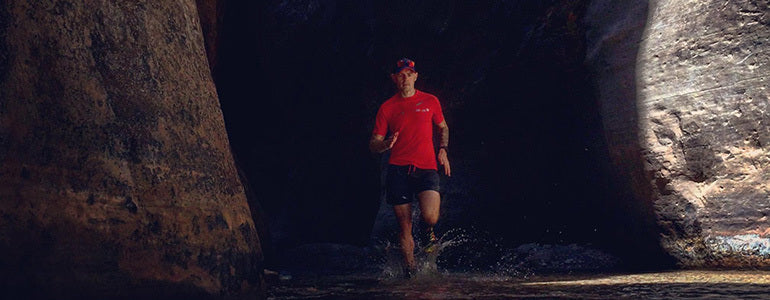
Go Gediminas!
Gediminas Grinius has just finished up the 2015 Ultra Trail World Tour (UTWT) in second place. It’s a gruelling tour in which he took part in 11 ultras of which he won two and placed 4th in another. “I’m still human,” he says. We’re not so sure: his efforts are truly super-human.
© Ultra-Trail World Tour
Many congratulationsThank you very much!
You must be feeling like a champ? Well, my expectations were a bit high this season, which were to compete well in all UTWT 100 milers. My body and mind betrayed me and I wasn’t able to finish the UTMB and Grand Raid Reunion.
The lesson there? I learnt that I am still a human like everyone else. One more lesson is that I must dream responsibly, but ambition and adventurism make me move forward.
“I also get to suffer in various ways, which is what I like!”
© Trans Gran Canaria
Was any race particularly special?All races are kind of beautiful in their own way. I know that probably sounds a bit of a politically correct answer but it is totally true. I really enjoy the diversity of the races. The Western States 100-mile Endurance Run [where he placed 4th] for example was extremely hot while during the Ultra Trail of Mt Fuji [which he won] it was raining all the time. I was very happy and excited to finish first during the Transgrancanaria, but absolutely disappointed with my Ultra Trail de Mont Blanc performance. The Grand Raid Reunion was very technical. So, all these things and the diversity makes the races attractive to me, because I have to train and improve different skills as a runner. I also get to suffer in various ways, which is what I like!
Click here for Gediminas's trail running tips!
Gediminas (third from left) at the Ultra-Trail World Tour award ceremony. © Ultra-Trail World Tour
What was the hardest race?The most painful was the UTMB, as I ran about 100 km with these huge blisters on the soles of my feet and then had killer quads for another 30 km, but it wasn’t the hardest. The most challenging was Grand Raid Reunion (GRR) which is the last race of the series and I was pretty much drained after all the season. In addition to that the GRR is the most technical race, my weakest point in trail running. Also, the first place of Ultra Trail World Tour was at stake and that put some additional psychological pressure on me, which it seems I wasn’t ready to take!
Same again for next year?Absolutely. I will be back for the 2016 world tour events. My goals will not differ from the last year, because I believe that I was on the right course, so my training cycle will remain the same. I will focus on proper recovery, building up strength to prepare for the upcoming season.
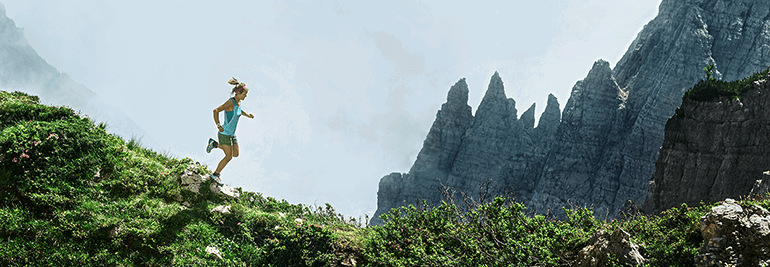
Emelie Forsberg on changing seasons, running and yoga
As the running season ends, Suunto ambassador Emelie Forsberg simply exchanges running shoes for skis. But between the running and ski mountaineering seasons, she finds a little breathing space for herself. November and December are two of skyrunning champion Emelie Forsberg’s favorite months. Her trail running season is over, the ski mountaineering season hasn’t begun so there’s no racing, only training.
Click here to read about a typical week of training for Emelie
Emelie is now training for the ski mountaineering season. © Emelie Forsberg“This year I needed a two week break from running so I attended a yoga camp,” she says. “This was very much needed for my mind. “I think it’s the mind that needs the most rest from racing, not really the body.” Emelie’s 2015 trail running season has been impressive. First place at the Transvulcania Ultra Marathon, first in the Mount Marathon in Alaska, first place in the ultra distance European Skyrunning Championship, first in the Ultra Pirineu – the list goes on. All of that racing demands intense mental focus and energy. “For sure, racing gives something back too, I love it, but you meet so many new people and you give everything you have on the races, and that takes energy,” Emelie says.
Click for Emelie's tips on how to improve your trail running
Emelie takes time to do a little yoga each day. © Emeile ForsbergThe yoga camp was exactly what she needed to unwind and to find her passion for training again. “It was a really calm week, with a lot of time to reflect on the new knowledge about yoga, about my running season, the last few years as a professional runner and my future,” she says. “I did go running each day, but without a watch and just short and very easy runs. “By the end of the week I got so motivated I began training hard again and that was really important because I lost my motivation a little bit in October.” Yoga is an everyday part of Emelie’s life. Most mornings she does a yoga session to tune into her body, find the tired or sore spots and focus on helping them recover.
Emelie Forsberg's six best-loved trail running routes!
© Emelie ForsbergShe says yoga and life in the mountains have something important in common. “I think real yogis are very humble, and real mountain people too,” she says. “I think both yoga and being in the mountains makes you aware of the fact you are very small part of this big, big world.”






























































